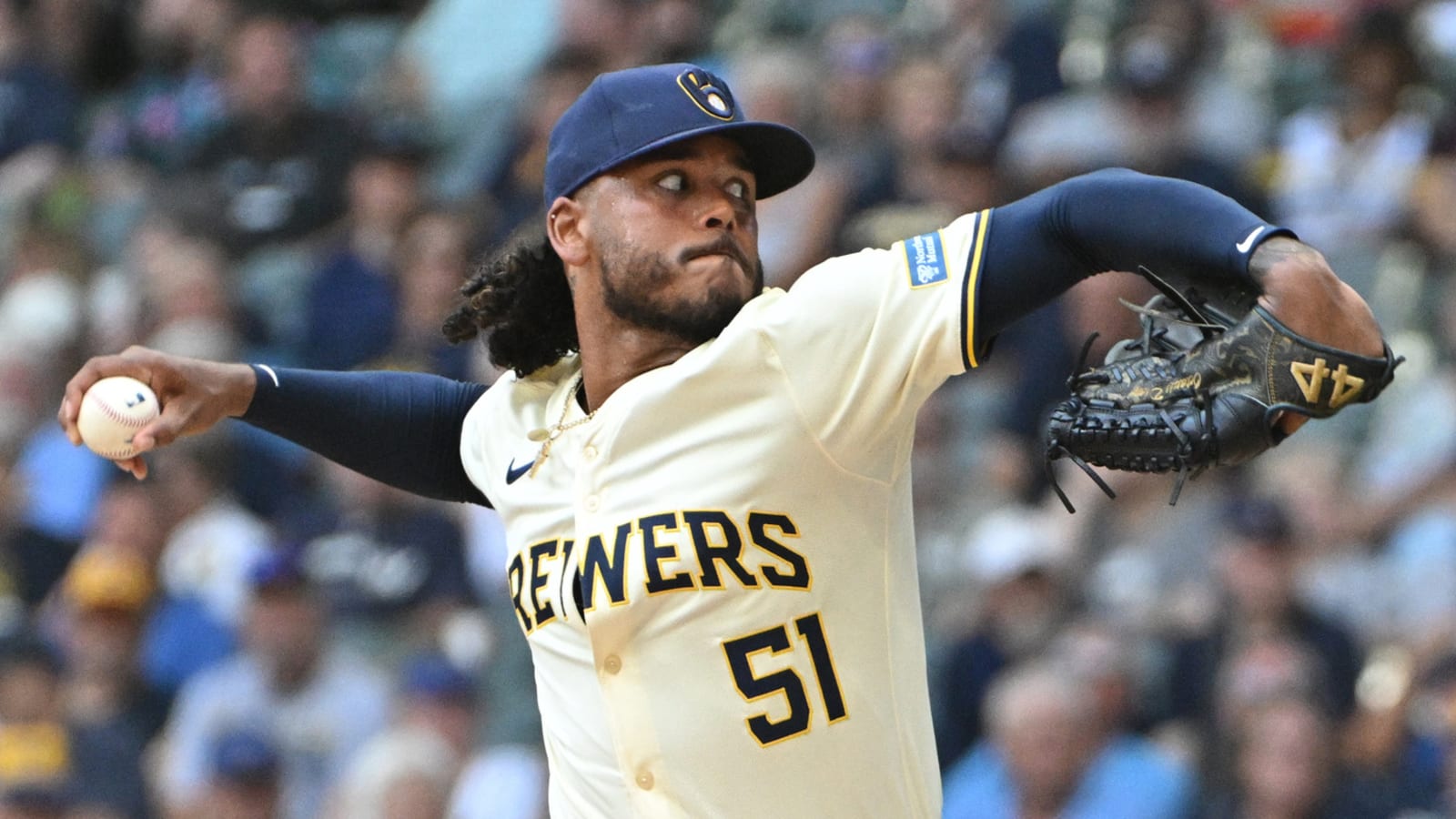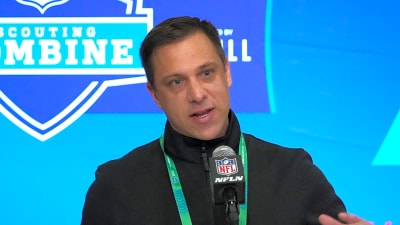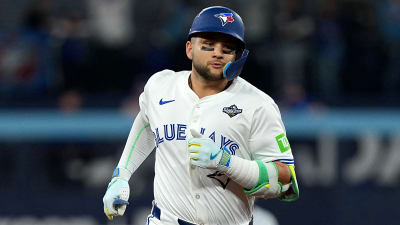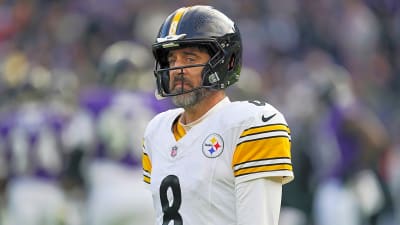
The Brewers have the best run differential in MLB. The Brew Crew have outscored their opponents by 139 runs, putting them 14 runs clear of the second-place Yankees’ +125 gap. Milwaukee is coasting to another division title and sit half a game behind the Phillies for the No. 2 seed in the National League, which would give the Brewers a first-round bye in the postseason.
It’s not a shock that the Brewers are good. They’ve proved time and again they’re capable of outperforming a middling payroll to compete for a playoff spot. Yet few would’ve predicted they’d be this good: 24 games over .500 with the largest division lead in baseball. Milwaukee’s previous success was built largely around the three-headed rotation monster of Corbin Burnes, Freddy Peralta and Brandon Woodruff. Between the Burnes trade and Woodruff’s shoulder injury, they’ve been forced to make do with a far less established rotation. Milwaukee’s rotation might not have the firepower it once did, yet it has held all the same.
Brewers starters are 12th in the majors with a 3.92 earned run average. That’s already an achievement considering the challenges of pitching at Miller Park, and they’ve been even better lately. Since the trade deadline, only the Astros and Tigers have a lower rotation ERA than Milwaukee does. Detroit’s mark is skewed by frequent use of openers; Tiger “starters” have an MLB-low 112 1/3 innings since the end of July. Milwaukee’s starters have tied for the third-most innings over that stretch (174 2/3), narrowly behind Houston and the Mets. For the past month and change, the Astros and Brewers have had the most valuable rotations in the league.
Not coincidentally, they were two of the league’s best teams last month. While Houston’s rotation turnaround has been a big story in its own right, Milwaukee’s rotation performance is probably more surprising. The Brewers signed Jakob Junis to take a season-opening rotation spot; he made one start, got hurt and was eventually moved at the deadline. Wade Miley and Robert Gasser each blew out early in the season. Joe Ross and DL Hall each spent multiple months on the injured list.
The Brewers have given multiple starts to 13 different pitchers this year (15 if one includes the opener appearances by Jared Koenig and Rob Zastryzny). They’ve had only three pitchers top 50 innings working from the rotation in a Milwaukee uniform. Still, between a pair of unexpected contributors and two buy-low deadline pickups, they’re trending toward October with a settled starting five.
Peralta has headlined the group. He’s the team leader in starts (28) and innings (153 2/3). Peralta carries a 3.75 ERA behind a strong 27.3% strikeout rate. While he can battle the home run ball at times, Peralta is one of the better pitchers in the league. He was supposed to deliver at the front of the rotation, and he has.
The pitchers coming after Peralta entered the year with a lot less fanfare. Colin Rea logged 124 2/3 innings over 26 appearances a year ago. He posted a 4.55 ERA with middling peripherals. When Milwaukee brought him back on a $4.5M deal on Nov. 2, the most notable aspect of the deal seemed to be its timing — a few days before the official opening of free agency. Rea secured a spot in the Opening Day rotation, likely as the No. 5 arm.
Through four months, Rea ranks narrowly behind Peralta for second on the team in innings. He has tossed a career-high 146 frames with a solid 3.70 ERA. His 8% swinging-strike rate and 19.4% strikeout percentage still suggest he’s more of a back-end arm, but Rea has thus far avoided any regression in terms of run prevention. He has an ERA between 3.25 and 4.22 in every month of the season, welcome consistency for a rotation that has dealt with significant injuries.
Rea has been a surprisingly key contributor, but he at least started the year on the MLB roster. That wasn’t the case for Tobias Myers, who has gone from minor league signee to No. 3 starter. The 26-year-old righty was a prospect of some regard early in his career, performing well through Double-A. Cleveland acquired Myers in a regrettable trade that sent future top prospect Junior Caminero to the Rays. Triple-A hitters obliterated him in 2022, leading multiple teams to cut him loose without giving him a look at the big league level.
Myers signed a minor league deal with Milwaukee going into 2023. He spent most of the season in Double-A, where he racked up huge strikeout totals against generally younger opposition. Myers never got himself back on the prospect radar, but he earned a look from the Brewers in mid-April when the rotation was floundering.
Shuttled on and off the active roster through the end of May, Myers had a 5.40 ERA in seven appearances. That’s the kind of production expected from a minor league signee pressed into action. As recently as a few months ago, it wasn’t clear if the Brewers would keep him on the roster all season. Gasser’s injury in early June gave Myers another shot. He has seized it.
Over his past 15 starts, the rookie owns a 2.27 ERA while working nearly six innings per appearance. He has a roughly average 21.1% strikeout rate and is limiting walks to a 6.3% clip. Myers has unquestionably been aided by a meager .264 average on balls in play. He doesn’t miss enough bats to be an ace. Yet even with some level of inevitable regression, Myers looks like a polished strike-thrower who fits in the middle of a rotation. Were it not for an absolutely loaded field in the National League this year, Myers might have gotten some Rookie of the Year attention.
Effective as Rea and Myers had been early in the summer, Milwaukee’s front office understandably viewed the rotation as their priority at the deadline. Myers was early into what has become a three-month stretch of excellent play. Rea’s workload was a question mark. Milwaukee made one of the first pickups of note early in July, bringing in Aaron Civale from the Rays. The night before the deadline, they flipped Junis and young outfielder Joey Wiemer (who’d been mostly squeezed out with the Brewers) to the Reds for Frankie Montas.
Both acquisitions were rebound hopefuls. Civale and Montas had each looked like upper mid-rotation arms at their best, but they’d fallen on harder times. Both pitchers had an ERA narrowly above 5.00 with their previous teams. They’re each allowing fewer than four earned runs per nine in Milwaukee. Civale has a 3.72 mark across 48 1/3 innings as a Brewer. Montas carries a 3.82 ERA in 33 frames following the trade.
Civale’s underlying performance isn’t dramatically different from where it’d been in Tampa Bay. His strikeout and walk profile has gone in the wrong direction. He’s getting more ground balls with the Brew Crew — somewhat diminishing the home run issues that really plagued him with the Rays — but he’s giving up more contact than ever before. As with Rea and Myers, the change is largely about his ball in play results. Opponents hit .312 on balls in play off Civale with the Rays; that’s down to .257 since the trade.
Montas has shown more obvious signs of improvement. His strikeout rate with the Reds sat a below-average 19%. It’s up to 22.7% in his brief stint in Milwaukee. His fastball velocity has climbed from the 94-95 range to sit more comfortably above 96 mph this month. Montas’ velocity was steadily building throughout the year in Cincinnati, so perhaps he’d have found this level regardless of where he was traded. Even if that’s the case, the Brewers deserve credit for identifying him as a buy-low target.
All of a sudden, manager Pat Murphy has a number of options he can choose from in constructing a playoff rotation. Milwaukee is going to win the NL Central. They’ll at least play in a three-game wild-card set. Winning that (or tracking down one of the Dodgers or Phillies for a bye) would guarantee at least a five-game Division Series.
Peralta is the obvious call to pitch the first game. Myers’ recent form probably gives him a leg up as a Game 2 starter, but that could be determined by how well he finishes the regular season. Montas may not be all the way back to the peak he showed with the A’s, but he’s pitching well enough to be a fine choice for either Game 2 or 3. That’d likely leave Murphy to choose between Civale and Rea for a potential fourth game, perhaps in tandem with a multi-inning relief appearance from Hall.
It still may not be an elite starting staff, but it’s hardly a liability. A shorter series will allow Murphy to leverage his excellent relief group more heavily. Late in close games, the scales should tip in Milwaukee’s favor. The rotation now looks strong enough to get them there.
More must-reads:
- Willy Adames ties Brewers HR record in win over Cardinals
- The hardest-throwing pitchers in MLB
- The 'AL and NL MVPs since 2000' quiz
Breaking News
Trending News
Customize Your Newsletter
 +
+
Get the latest news and rumors, customized to your favorite sports and teams. Emailed daily. Always free!








